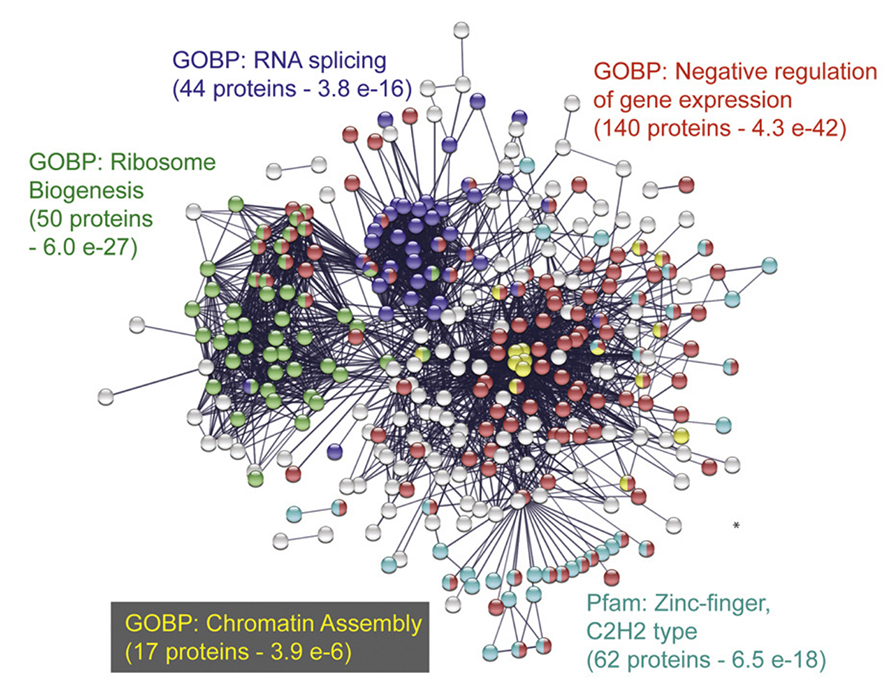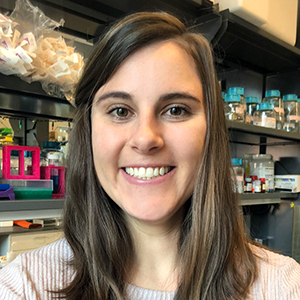SUMO and stem cells
Stem cells are like master cells — they can divide to create more stem cells and be triggered by signals within and outside of themselves to give rise to virtually any cell type in the body. In order to exist as precursors, in what is called the pluripotent state, stem cells must be tightly controlled by internal signals but also highly responsive to developmental cues. Researchers do not yet understand this balance completely.
A team from the University of Dundee in Scotland led by Barbara Mojsa recently investigated how stem cells are influenced by SUMOylation, a post-translational modification in which a small ubiquitinlike modifier called SUMO is attached to a lysine residue on target proteins. Their work recently was published in the journal Molecular & Cellular Proteomics.
The SUMOylation and deSUMOylation processes are reversible and dynamic and can affect cell fate by altering protein function, interactions or stability. The group previously was studying SUMOylation in cancer cells but decided they may not be the best model system due to the numerous mutations they contain.
“Stem cells are much more dynamic, require tighter control of all cellular processes and undergo dramatic changes during differentiation,” Mojsa said, “making them ideal to study the biological role of SUMOylation.”
The researchers started using human induced pluripotent stem cells instead. These hiPSCs are derived from terminally differentiated somatic cells such as blood or skin cells that have been reprogrammed back into a pluripotent state.
The group blocked SUMOylation in hiPSCs using an inhibitor called ML792 and found that key pluripotency markers were lost. They next engineered cells to express modified versions of two enzymes, SUMO1 and SUMO2, to identify which proteins were modified and where.
They identified 427 SUMO-modified proteins and 976 SUMO sites in hiPSCs and used bioinformatic tools to identify networks of proteins that were SUMOylated. They found that the majority of the protein targets were involved in regulating transcription and chromatin structure, both of which influence gene expression.

“Delicate balance of SUMO modification might be the key to maintenance of pluripotent state and control of various differentiation processes,” Mojsa said.
The team’s technique also allowed them to differentiate between SUMO1 and SUMO2 targets.
“We didn’t expect to observe such a big difference between SUMO1 and SUMO2 targets,” Mojsa said. “It was previously suggested that these two proteins are rather redundant in their functions.”
This research has impacts beyond understanding what forces control the pluripotent state. The ML792 inhibitor recently entered clinical trials for cancer treatment —understanding its broader effect is informative. Furthermore, hiPSCs can be used to generate almost any human cell type and therefore could have therapeutic uses. However, the process to differentiate the cells can be lengthy.
“If what we think is true and SUMOylation acts as a brake to cell differentiation, we could imagine using SUMOylation inhibitors to increase the efficiency or shorten the time required for differentiation, which would be a great advantage for regenerative medicine,” Mojsa said.
In the future, the group is interested in understanding how SUMOylation affects differentiation pathways.
Enjoy reading ASBMB Today?
Become a member to receive the print edition four times a year and the digital edition monthly.
Learn moreGet the latest from ASBMB Today
Enter your email address, and we’ll send you a weekly email with recent articles, interviews and more.
Latest in Science
Science highlights or most popular articles

Mapping proteins, one side chain at a time
Roland Dunbrack Jr. will receive the ASBMB DeLano Award for Computational Biosciences at the ASBMB Annual Meeting, March 7–10, just outside of Washington, D.C.

Exploring the link between lipids and longevity
Meng Wang will present her work on metabolism and aging at the ASBMB Annual Meeting, March 7-10, just outside of Washington, D.C.

Defining a ‘crucial gatekeeper’ of lipid metabolism
George Carman receives the Herbert Tabor Research Award at the ASBMB Annual Meeting, March 7–10, just outside of Washington, D.C.

The science of staying strong
Muscles power every movement, but they also tell the story of aging itself. Scientists are uncovering how strength fades, why some species resist it and what lifestyle and molecular clues could help preserve muscle health for life.

Bacteriophage protein could make queso fresco safer
Researchers characterized the structure and function of PlyP100, a bacteriophage protein that shows promise as a food-safe antimicrobial for preventing Listeria monocytogenes growth in fresh cheeses.

Building the blueprint to block HIV
Wesley Sundquist will present his work on the HIV capsid and revolutionary drug, Lenacapavir, at the ASBMB Annual Meeting, March 7–10, in Maryland.

